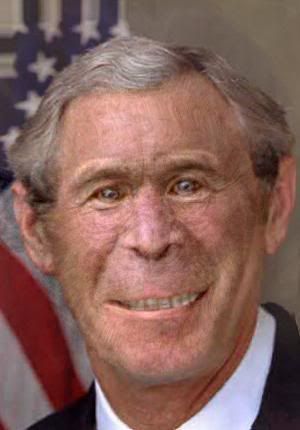General Discussion
Related: Editorials & Other Articles, Issue Forums, Alliance Forums, Region ForumsHuman fossils hint at new species
The remains of what may be a previously unknown human species have been identified in southern China.
The bones, which represent at least five individuals, have been dated to between 11,500 and 14,500 years ago.
But scientists are calling them simply the Red Deer Cave people, after one of the sites where they were unearthed.
The team has told the PLoS One journal that far more detailed analysis of the fossils is required before they can be ascribed to a new human lineage.
"We're trying to be very careful at this stage about definitely classifying them," said study co-leader Darren Curnoe from the University of New South Wales, Australia.
Continued at Link:
http://www.bbc.com/news/science-environment-17370170

yesphan
(1,587 posts)
warrior1
(12,325 posts)
progressoid
(49,912 posts)okaawhatever
(9,457 posts)Feral Child
(2,086 posts)Xithras
(16,191 posts)A few of years ago, when the research was finally confirming that non-African's are actually human/neanderthal hybrids, many evolutionary scientists pointed out that the confirmation helped to solve an old evolutionary mystery. While anthropologists and scientists had come up with a scientific basis for the physiological differences between Africans and non-Africans, the speed of the change pushed the boundaries of credibility. The realization that some of the physiological changes may have come from interbreeding solved that problem.
That, of course, brought up the "Asian question". Namely, how did East Asian peoples evolve their gracile body and skull features in even less time than it took for non-African features to evolve in Central Asia? When the Denisovan bones were identified as non-human, the question immediately popped up...could East Asians have similarly interbred with an as-yet unknown third hominid species? The Denisovans? Someone else? If so, that would make sub-Saharan Africans the genetically "pure" humans, Central Asian and Europeans a hybrid between humans and neanderthal, and East Asians a hybrid between three hominid species. Additional genetic testing on the Denisovan bones last year revealed that they themselves had interbred with both the neanderthals and a third "mystery species", which raised the question again. How heavily populated was Eastern Asia when the first modern humans moved in, and did those humans kill that population, or did they interbreed with them as their ancestors had done with the neanderthal?
The fact that we've now discovered what appears to be a new hominid species that would have existed AT THE SAME TIME as those gracile features were appearing in early East Asian humans certainly bolsters that possibility.
pscot
(21,024 posts)Baitball Blogger
(46,655 posts)Xithras
(16,191 posts)And yet both the Eurasian and East Asian human phenotypes appear to have been altered by interbreeding with them. Visually, Eurasians and East Asians have different body structures than both their African and Neanderthal ancestors. The interbreeding of two related species can result in offspring that are visually different than both parent species, and they can display characteristics that aren't readily visible in either. Mixing the genes can result in something entirely "new".
On top of that, it's improbable that the interbreeding happened on a widespread scale. Human and neanderthal interbreeding unquestionably occurred, but DNA studies suggest that it wasn't a hugely common thing (common enough to alter us, but not common enough to create an entirely new subspecies). If interbreeding occurred in East Asia with another related species, it's probable that it would have been equally uncommon. They could have contributed enough genes to alter the early human populations, but not enough to overcome the less robust Eurasian body structure.
It's all just speculation at this point anyway. With skulls this young, they're still hoping to recover DNA. If they succeed, it should be fairly easy to determine if any interbreeding occurred. Until then it's just an interesting possibility. Given the fact that humans will screw nearly anything, I'd personally bet that it did happen on some scale. The only real question, IMHO, is whether it happened often enough to have any effect on the overall population.
Octafish
(55,745 posts)
More of a Cheerleading Useless Eater Type.
Octafish
(55,745 posts)Humanity's roots are more interesting than most of humanity kick.